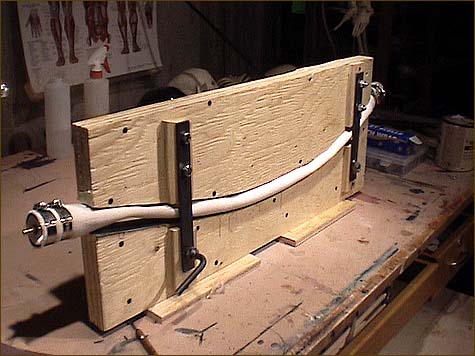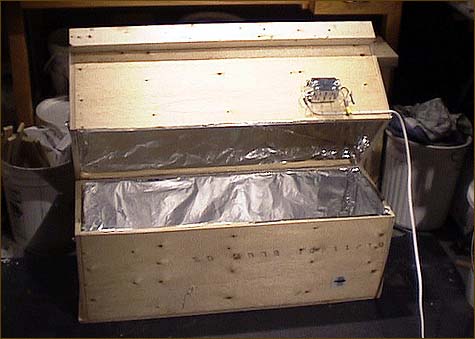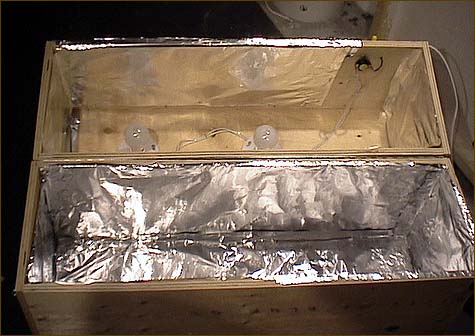 This is the laminating press used to glue the limbs together. |
The first bows I ever made were selfbows whittled from a stave. They consumed my shooting practice time and there were several months where I did not shoot any of my commercially made laminated bows. Then one day I went shooting with my brother in law. With me shooting my self-fabricated stickbows alongside Bryan's recurve, I was shocked at how much I had been acclimatized to the poor performance of my bows. His bow was 10 lbs lighter than my lightest bow, yet arrow velocity from his bow was markedly higher. I wondered how difficult it would be to make a laminated bow such that I could enjoy both decent arrow velocity and the pleasure of knowing I had made the weapon used to cast those arrows at a decent velocity.
After much research, I finally mustered up enough courage to bite the bullet and try. I drew up a rough blueprint of my bow-to-be and ordered a shwack of materials from Bingham Projects (www.binghamprojects.com). Several weeks later they arrived, and I gleefully rushed off to the hardware store to acquire additional materials required to construct a laminating press and a heat box.
Building the heat box and laminating press was quite an surprising experience in the "know-thy-self" department. I was so excited to get going on the actual bow building process that I became seriously flustered and frustrated at my incompetent clumsyness attempting to rapidly build the tools I would use to make the bow. I was dropping and losing tools all over the place and the workroom quickly degenerated into an unorganized state of chaos. I had to physically stop myself, sit down, and regain some semblence of balance before I was able to continue!
Here are some photographs of the laminating press and heat box. In the future, I hope to post some more details on bow building and possibly post a story on the process from start to finish!
 This is the laminating press used to glue the limbs together. |
 Heat box used to bake laminations and cure epoxy. |
 Two 200 watt light bulbs provide the heat energy. Lining the inside of the box, tin foil is used to reflect radiant heat towards laminating press. |
 A thermostat is used to maintain a box temperature of approx. 170 degrees F. |